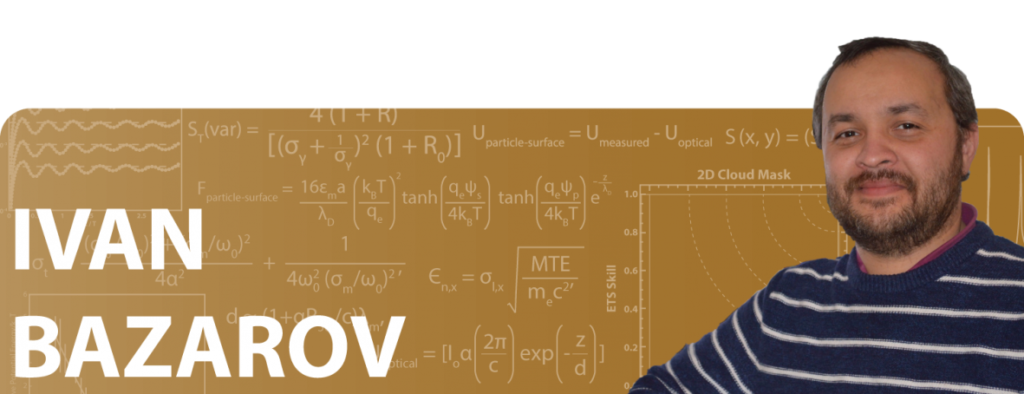WHAT DID THE 2010 EARLY CAREER AWARD ALLOW YOU TO DO?
In this Early Career award, I investigated the fundamental limits to beam brightness available from photoinjectors. The performed research has shed a new light on the mechanisms of photoemission as they relate to fundamental beam properties. A new limit to beam brightness was identified, which arises from disorder-induced heating of the photoelectrons randomly generated at the cathode.
In addition, a new adaptive method for 3D laser shaping was realized and successfully demonstrated in an actual photoemission gun. The research results have stimulated the area of photocathodes and have had an impact on bright beam production field as a whole.
Finally, many of the advances made within this proposal have directly contributed to new record-setting high brightness and high current demonstrations at the Cornell Photoinjector, which now represents a new state-of-the-art in the area of high intensity photoelectron sources.
ABOUT:
Ivan Bazarov is a professor in the Department of Physics at Cornell University.
SUPPORTING THE DOE SC MISSION:
The Early Career Award program provides financial support that is foundational to young scientists, freeing them to focus on executing their research goals. The development of outstanding scientists early in their careers is of paramount importance to the Department of Energy Office of Science. By investing in the next generation of researchers, the Office of Science champions lifelong careers in discovery science.
For more information, please go to the Early Career Research Program.
THE 2010 PROJECT ABSTRACT:
Investigation of Fundamental Limits to Beam Brightness Available From Photoinjectors
The objective of this project is to extend the fundamental understanding of high average current low emittance sources of relativistic electrons necessary for a new generation of coherent X‐ray synchrotron radiation facilities. The proposal aims to perform experimental and theoretical investigations of the limits on beam brightness by focusing on photocathode sources and space charge effects in a systematic way, by measuring, analyzing, and investigating ways to reduce thermal emittance, and compensating emittance growth via laser pulse shaping and beam manipulations. Understanding these effects is an important step in producing high brightness electron sources for future light sources and electron diffraction applications. Better understanding of the associated physics and generation of a low emittance beam can lead to significant cost saving for future light sources.
RESOURCES:
J. Maxson, A. Bartnik, and I. Bazarov, “Efficient and accurate laser shaping with liquid crystal spatial light modulators.” Applied Physics Letters 105, 171109 (2014). [DOI: 10.1063/1.4900835]
S. Karkare, L. Boulet, L. Cultrera, B. Dunham, X. Liu, W. Schaff, and I. Bazarov, “Ultrabright and ultrafast III-V semiconductor photocathodes.” Physical Review Letters 112, 097601 (2014). [DOI: 10.1103/PhysRevLett.112.097601]
C. Gulliford, A. Bartnik, I. Bazarov, L. Cultrera, J. Dobbins, B. Dunham, F. Gonzalez, S. Karkare, H. Lee, H. Li, Y. Li, X. Liu, J. Maxson, C. Nguyen, K. Smolenski, and Z. Zhao, “Demonstration of low emittance in the Cornell Energy Recovery Linac Injector Prototype.” Physics Review Special Topics – Accelerators and Beams 16, 073401 (2013). [DOI: 10.1103/PhysRevSTAB.16.073401]
Additional profiles of the 2010 Early Career Award winners can be found at: https://www.energy.gov/science/listings/early-career-program.
The Office of Science is the single largest supporter of basic research in the physical sciences in the United States and is working to address some of the most pressing challenges of our time. For more information, please visit www.energy.gov/science.
Original post https://alertarticles.info



